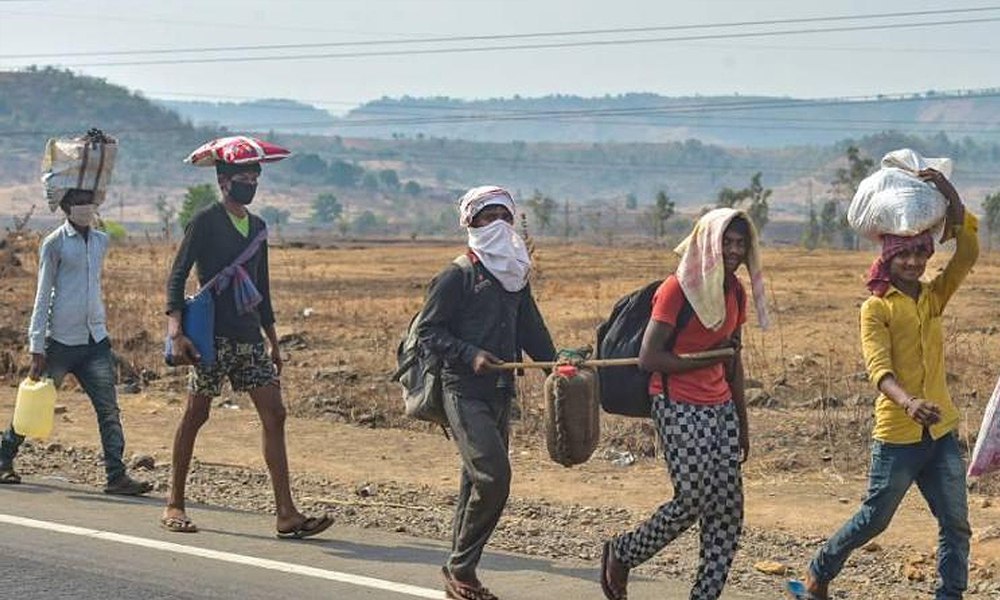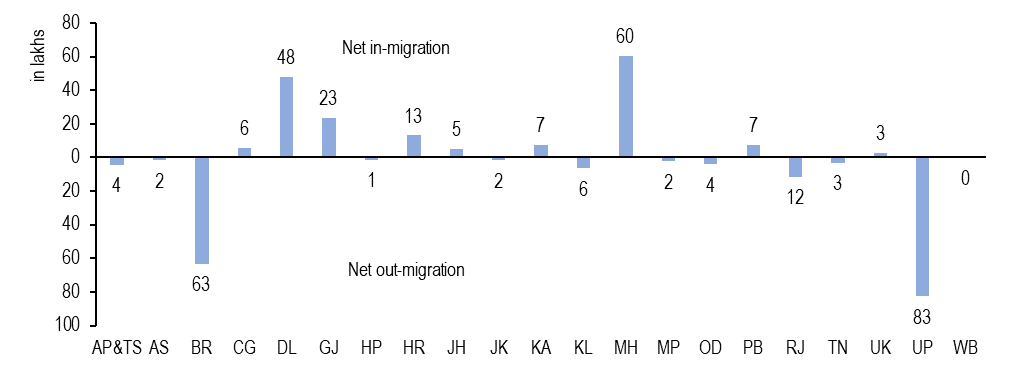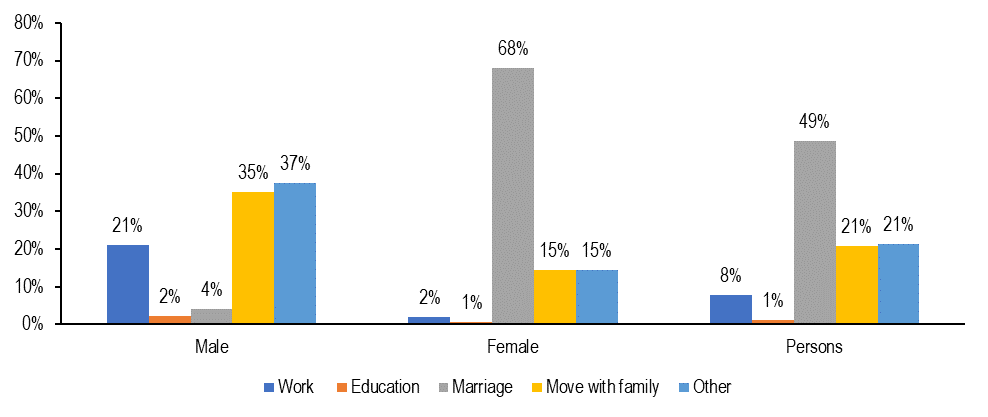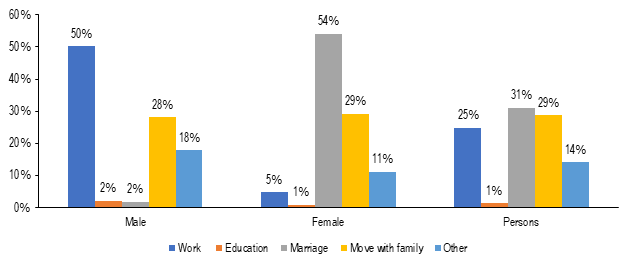
Understanding Impact Of Lockdown On Migrants In India
India, 13 Jun 2020 10:29 AM GMT | Updated 13 Jun 2020 11:53 AM GMT
Creatives : Nandan M
Creative designer Skilled in Photography, Graphics, Typography, Animation, and Editing. Strong arts and design professional with a diploma focused on adobe suit.
The lockdown has severely impacted migrants, several of whom lost their jobs due to shutting of industries and were stranded outside their native places wanting to get back.
Indian has been under lockdown since March 25, 2020. During this time, activities not contributing to the production and supply of essential goods and services were completely or partially suspended. Passenger trains and flights were halted. The lockdown has severely impacted migrants, several of whom lost their jobs due to shutting of industries and were stranded outside their native places wanting to get back. Since then, the government has announced relief measures for migrants and made arrangements for migrants to return to their native place. The Supreme Court of India, recognising the problems faced by migrants stranded in different parts of the country, reviewed transportation and relief arrangements made by the government.
On June 9, the Court directed central and state governments to complete transportation of remaining stranded migrants and expand the focus of relief measures to facilitate employment for returning migrants. In this blog, we highlight some facts about migration in India, summarise key relief measures announced by the government and directives issued by the Supreme Court for the migrant population in relation to the lockdown.
Overview of Migration
Migration is the movement of people away from their usual place of residence, across either internal (within the country) or international (across countries) borders. The latest government data on migration comes from the 2011 Census. As per the Census, India had 45.6 crore migrants in 2011 (38% of the population) compared to 31.5 crore migrants in 2001 (31% of the population). Between 2001 and 2011, while the population grew by 18%, the number of migrants increased by 45%. In 2011, 99% of total migration was internal and immigrants (international migrants) comprised 1%.
Patterns of migration
Internal migrant flows can be classified based on origin and destination. One kind of classification is: i) rural-rural, ii) rural-urban, iii) urban-rural and iv) urban-urban. As per the 2011 census, there were 21 crore rural-rural migrants which formed 54% of classifiable internal migration (the Census did not classify 5.3 crore people as originating from either rural or urban areas). Rural-urban and urban-urban movement accounted for around 8 crore migrants each. There were around three crore urban-rural migrants (7% of classifiable internal migration).
Another way to classify migration is: (i) intra-state and (ii) inter-state. In 2011, intra-state movement accounted for almost 88% of all internal migration (39.6 crore persons).
There is variation across states in terms of inter-state migration flows. According to the 2011 Census, there were 5.4 crore inter-state migrants. As of 2011, Uttar Pradesh and Bihar were the largest sources of inter-state migrants while Maharashtra and Delhi were the largest receiver states. Around 83 lakh residents of Uttar Pradesh and 63 lakh residents of Bihar had moved either temporarily or permanently to other states. Around 60 lakh people from across India had migrated to Maharashtra by 2011.
Figure 1: Inter-state Migration (in lakh)

Note: A net out-migrant state is one where more people migrate out of the state than those that migrate into the state. Net in-migration is the excess of incoming migrants over out-going migrants.
Reasons For Internal Migration
As of 2011, the majority (70%) of intra-state migration was due to reasons of marriage and family with variation between male and female migrants. While 83% of females moved for marriage and family, the corresponding figure for males was 39%. Overall, 8% of people moved within a state for work (21% of male migrants and 2% of female migrants).
Movement for work was higher among inter-state migrants- 50% of male and 5% of female inter-state migrants. As per the Census, there were 4.5 crore migrant workers in 2011. However, according to the Working Group Report on Migration, the Census underestimates the migrant worker population. Female migration is recorded as movement due to family since that is the primary reason. However, many women take up employment after migrating which is not reflected in the number of women moving for work-related reasons.
According to the Economic Survey, 2016-17, Census data also underestimates temporary migrant labour movement. In 2007-08, the NSSO estimated the size of India's migrant labour at seven crore (29% of the workforce). The Economic Survey, 2016-17, estimated six crore inter-state labour migrants between 2001-2011. The Economic Survey also estimated that in each year between 2011-2016, on average 90 lakh people travelled for work.
Figure 2: Reasons for intra-state migration

Figure 3:Reasons for inter-state migration

Issues faced by migrant labour
Article 19(1)(e) of the Constitution, guarantees all Indian citizens the right to reside and settle in any part of the territory of India, subject to reasonable restrictions in the interest of the general public or protection of any scheduled tribe. However, people migrating for work face key challenges including i) lack of social security and health benefits and poor implementation of minimum safety standards law, ii) lack of portability of state-provided benefits especially food provided through the public distribution system (PDS) and iii) lack of access to affordable housing and basic amenities in urban areas.
Poor Implementation OF ISMW Act
The ISMW Act provides certain protections for inter-state migrant workers. Labour contractors recruiting migrants are required to: (i) be licensed, (ii) register migrant workers with the government authorities, and (iii) arrange for the worker to be issued a passbook recording their identity. Guidelines regarding wages and protections (including accommodation, free medical facilities, protective clothing) to be provided by the contractor are also outlined in the law.
In December 2011, a report by the Standing Committee on Labour observed that registration of workers under the ISMW Act was low and implementation of protections outlined in the Act was poor. The report concluded that the Central government had not made any concrete and fruitful efforts to ensure that contractors and employers mandatorily register the workers employed with them enabling access to benefits under the Act.
Lack of Portability of Benefits
Migrants registered to claim access to benefits at one location lose access upon migration to a different location. This is especially true of access to entitlements under the PDS. Ration card required to access benefits under the PDS is issued by state governments and is not portable across states. This system excludes inter-state migrants from the PDS unless they surrender their card from the home state and get a new one from the host state.
Lack of Affordable Housing
The proportion of migrants in the urban population is 47%.1 In 2015, the Ministry of Housing and Urban Affairs identified migrants in urban areas as the largest population needing housing in cities. There is an inadequate supply of low-income ownership and rental housing options. This leads to the spread of informal settlements and slums. Prime Minister Awaas Yojana (PMAY) is a central government scheme to help the economically weaker section and low-income group access housing. Assistance under the scheme includes: i) slum rehabilitation, ii) subsidised credit for home loans, iii) subsidies up to Rs 1.5 lakh to either construct a new house or enhance existing houses on their own and iv) increasing availability of affordable housing units in partnership with the private sector. Since housing is a state subject, there is variation in the approach of States towards affordable housing.
Steps Taken by Government
During the lockdown, several inter-state migrant workers tried to return to their home state. Due to the suspension public transport facilities, migrants started walking towards their home state on foot. Subsequently, buses and Shramik special trains were permitted by the central government subject to coordination between states.[3],[4] Between May 1 and June 3, more than 58 lakh migrants were transported through specially operated trains and 41 lakh were transported by road. Measures taken by the government to aid migrants include-
Transport: On March 28, the central government authorised states to use the State Disaster Response Fund to provide accommodation to travelling migrants. States were advised to set up relief camps along highways with medical facilities to ensure people stay in these camps while the lockdown is in place.
In an order issued on April 29, the Ministry of Home Affairs allowed states to co-ordinate individually to transport migrants using buses. On May 1, the Indian Railways resumed passenger movement (for the first time since March 22) with Shramik Special trains to facilitate the movement of migrants stranded outside their home state. Between May 1 and June 3, Indian Railways operated 4,197 Shramik trains transporting more than 58 lakh migrants. Top states from where Shramik trains originated are Gujarat and Maharashtra and states where the trains terminated are Uttar Pradesh and Bihar.[5] Note that these trends largely correspond to the migration patterns seen in the 2011 census data.
Food distribution: On April 1, the Ministry of Health and Family Affairs directed state governments to operate relief camps for migrant workers with arrangements for food, sanitation and medical services. On May 14, under the second tranche of the Aatma Nirbhar Bharat Abhiyaan, the Finance Minister announced that free food grains would be provided to migrant workers who do not have a ration card for two months. The measure is expected to benefit eight crore migrant workers and their families. The Finance Minister also announced that One Nation One Ration card will be implemented by March 2021, to provide portable benefits under the PDS. This will allow access to ration from any Fair Price Shop in India.
Housing: The Aatma Nirbhar Bharat Abhiyaan also launched a scheme for Affordable Rental Housing Complexes for Migrant Workers and Urban Poor to provide affordable rental housing units under PMAY. The scheme proposes to use existing housing stock under the Jawaharlal Nehru National Urban Housing Mission (JnNURM) as well as incentivise public and private agencies to construct new affordable units for rent. Further, additional funds have been allocated for the credit-linked subsidy scheme under PMAY for the middle-income group.
Financial aid: Some state governments (like Bihar, Rajasthan and Madhya Pradesh) announced one-time cash transfers for returning migrant workers. UP government announced the provision of maintenance allowance of Rs 1,000 for returning migrants who are required to quarantine.
Directions by Supreme Court
The Supreme Court reviewed the situation of migrant labourers stranded in different parts of the country, noting inadequacies and lapses in the government response to the situation.
- On May 26, the Court issued an order to the central and state governments to submit a response detailing all measures are taken by the respective governments for migrant labourers. On May 28, the Court provided interim directions to the central and state/UT governments for ensuring relief to the migrant workers: i) no train or bus fare should be charged to migrant workers, ii) free food should be provided to stranded migrants by the concerned State/UT government and this information should be publicised, iii) States should simplify and speed up the process of registration of migrants for transport and those registered should be provided transportation at the earliest and iv) the state receiving migrants should provide last-mile transport, health screening and other facilities free of cost.
Reiterating their earlier directions, on June 5 (full order issued on June 9), the Supreme Court further directed the Central and state/UT governments to ensure: i) transportation of all stranded workers wanting to return to their native place is completed within 15 days, ii) identification of migrant workers is immediately completed and the process of migrant registration be decentralised to police stations and local authorities, iii) records of returning migrant labourers are kept including details about the place of earlier employment and nature of their skills, and iv) counselling centres are set-up at the block level to provide information about central and state government schemes and other avenues of employment. The Court also directed the state/UT governments to consider withdrawal of prosecution/complaints under Section 51 of Disaster Management Act filed against migrant labourers who allegedly violated lockdown orders.Also Read: UP Migrant Family Sells Jewellery Worth Rs. 1,500 To Make Ends Meet, Govt Steps In
 All section
All section














